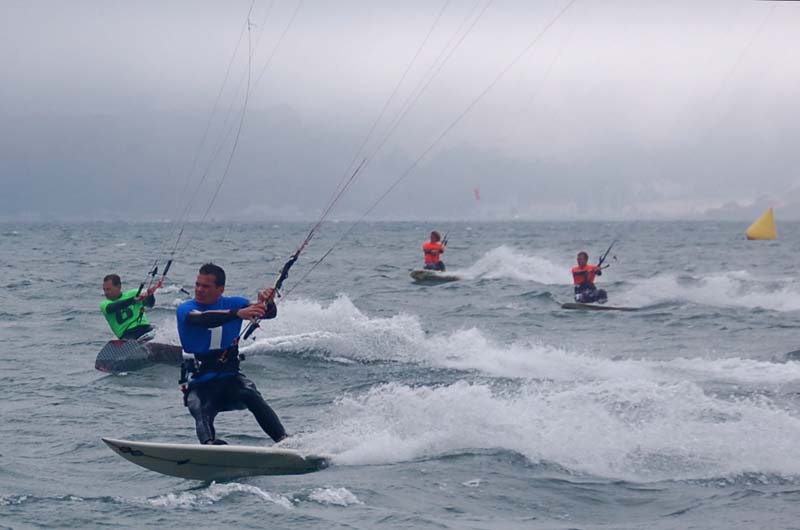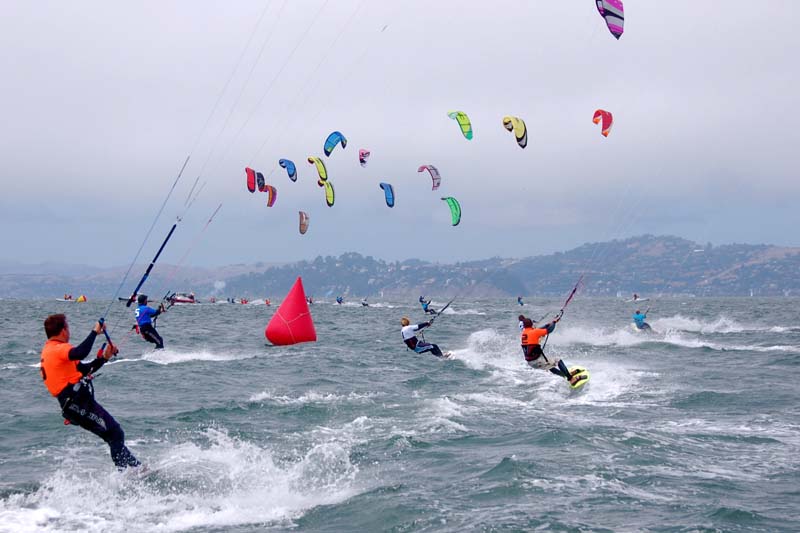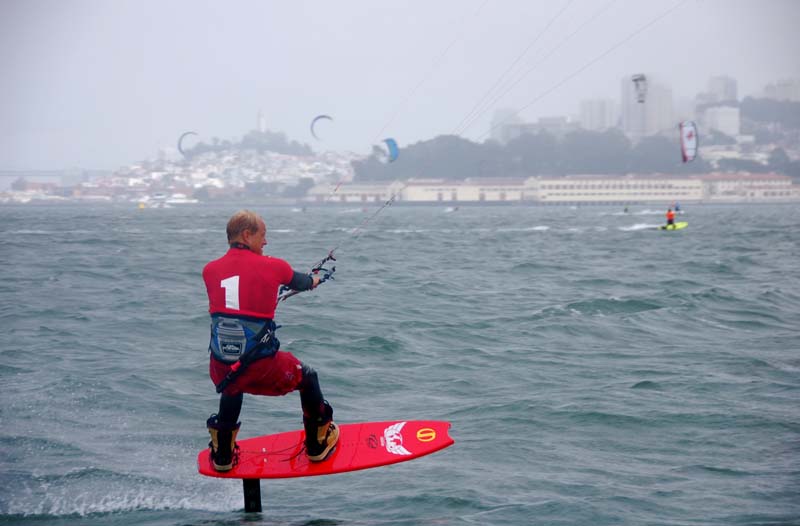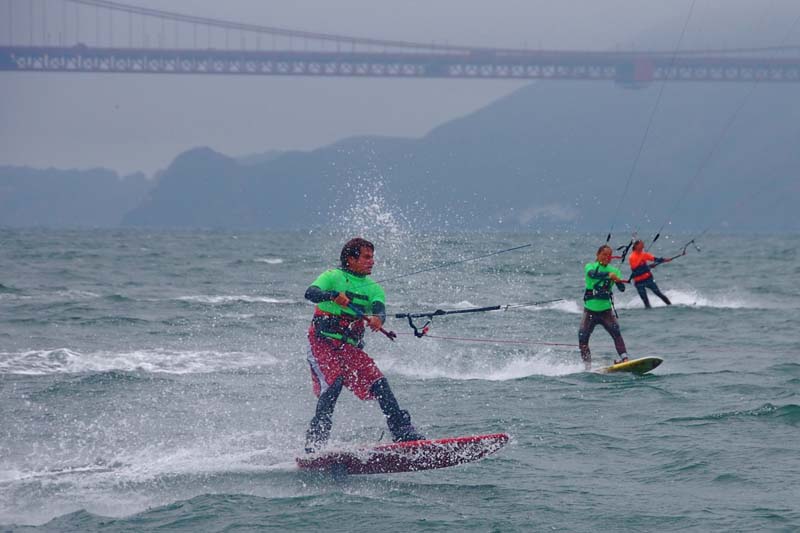The organizers and volunteers nearly outnumbered the racers. Sixteen races were held over three days offering many opportunities for those with good overall speed and strategy not to mention good conditioning and experience to rise to the top.
Overall Men's division was won by Anthony Chavez of SF, California who made his own board recently of wal mart foam and ironing board style outline. He used a traditional C shape kite as opposed to the more modern bow kites and bested the fleet with pure overall better speed and strategy on all courses. In second was Jeff Kafka, also on surfboard shape of his own design, a quad fin board titled "prisoner's of wind". Jeff also had excellent speed though sailed the course incorrectly during one race which may have cost him the first place. Fifteen year old Jesse Richman consistently challenged the fleet through the event with four 1st places in the initial 2 day series, losing his lead a bit on the third day, ultimately finishing 3rd, saying "I was just trying not to lose... I was trying to hurry back to take a sauna at the club." He finished 1st among Juniors beating his older brother as well, Sean Richman placed second in the Juniors.
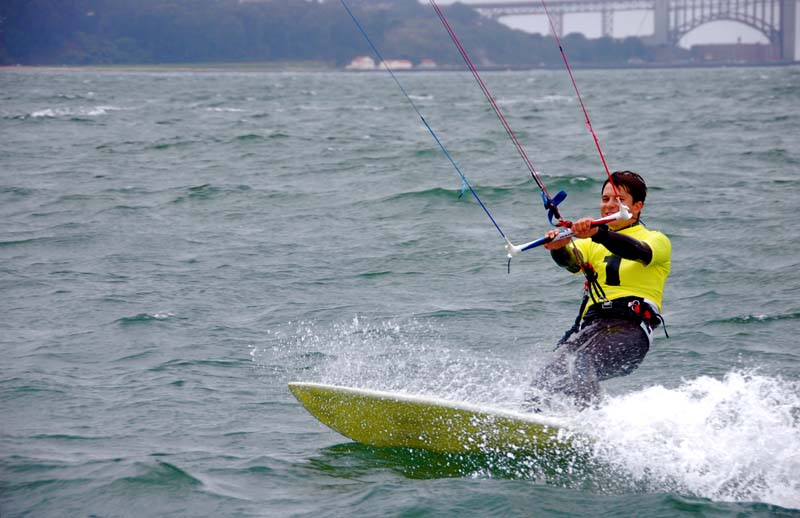
Many of the competitors used surfboard style directional boards as opposed to typical bi-directional wakeboard style boards, a retro-resurgence harkening back to the kitesurfing's starting point. The surfboard design provides more waterline upwind and stability with speed downwind but requires that you gybe the boat like all other sailboats moving to the other side in order to turn, unlike a bi-directioal wakeboard which allows you to easily go in either direction equally.
Why do directional surf boards work better than bidirectional kiteboards I asked competitor Steve Gibson, "well by design directionals do one thing well, they track, it pays off with better upwind ability and better stability and speed downwind if you're willing to put the effort into to make a gybe as opposed to simply using a bidirectional."
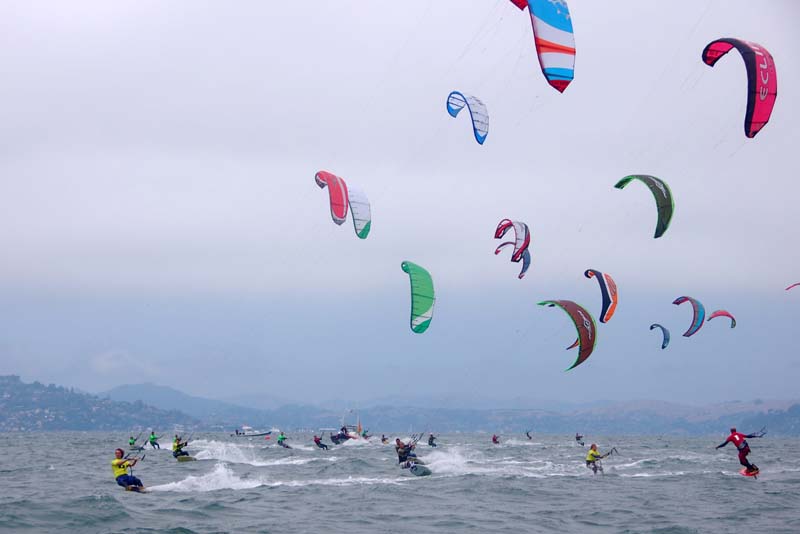
Nils Stolzelchner (3rd Masters) went through many many iterations of bidirectional boards over the past two years until half way through the event he tried a directional surfboard again. He left the event with a 12th place and a stack of homemade equipment sitting in a pile back in SF as he boarded the plane back to Corpus Christie Texas to start all over again. Even windsurfing legacy and North Sails designer Ken Winner competed finishing 15th, experimenting with new kites and boards giving locals a chance to innovate head to head with legends.
Along with the return to surfboards and experimental bidirectionals, innovation was strong in the area of fins and kites. Most of the winners had 4.5 inch fins. Almost all riders used a bow shaped kite as compared to a C shape kite. Only Anthony Chavez used a C kite and he won. Bow shaped kites are relatively new on the kite scene and have the advantage of being totally depowerable offering the option of using a large kite that can easily be depowered. A C kite has the feeling of being really powered with heavy bar pressure and doesn't completely depower. Anthony made this work him becuase, "It's all I had." Most riders used only one or two kites in the 9-14 sq/m range with 12 being most common for the entire event covering the conditions.
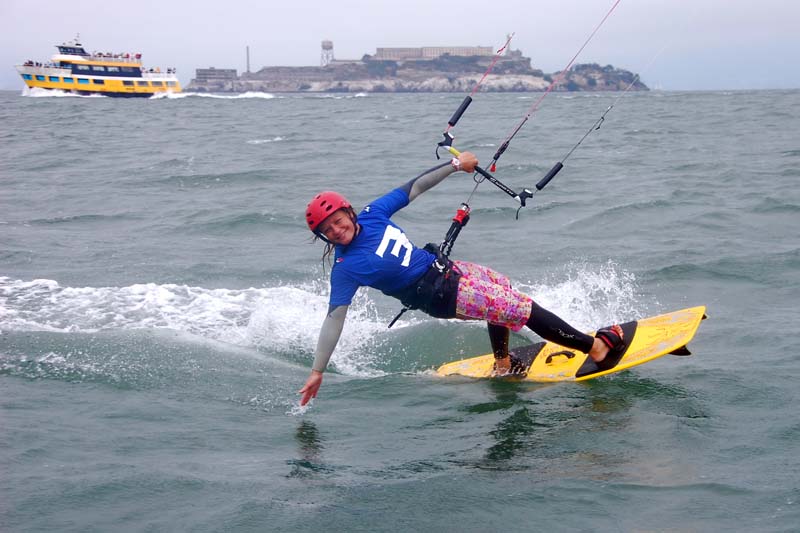
"Overall the course racing worked as an event becuase it provided a fair opportunity for a broad range of people, professional kiteboarders, those with traditional course racing skills as well as masters, youth and women to have an opportunity to compete in a very clear cut and fair manner", added Gibson (31st Overall).
Opportunities for innovation abounded and was the theme for the event as each rider found that trying lots of things and sticking with what worked helped them increase their overall speed. Each sailor had to struggle to find their groove and turn up the mojo to compete head to head with the other top sailors to make this, the first US Kite Nationals an exciting and enjoyable event. It's been said, I'll say it again, nothing beats top notch regatta management like that achieved by John Craig of the StFYC not to mention the food and parties were absolutely world class, because, as John Craig says, "That's what we do at the Saint Francis."
See you at the World Kite Racing Championships, hopefully in SF next year!
Paul
Results are here: http://www.stfyc.com

